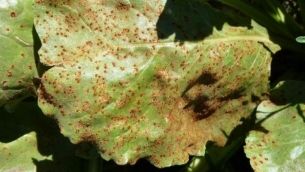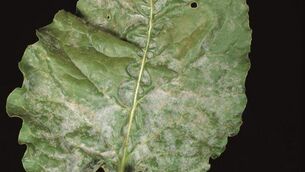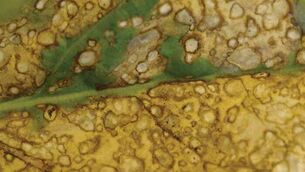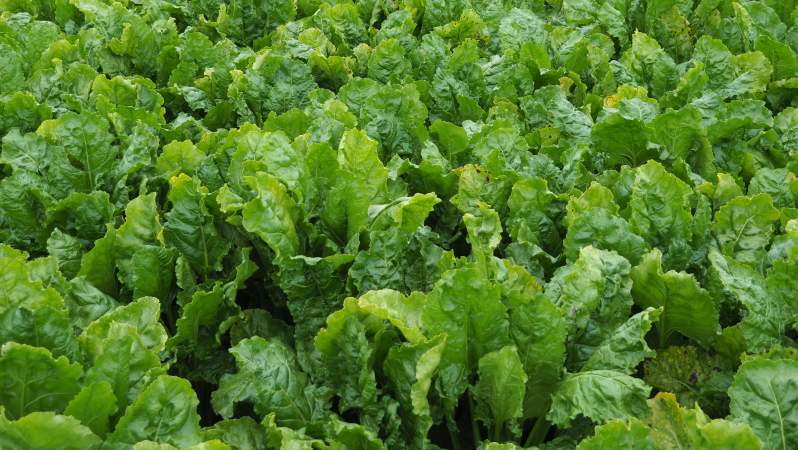- Broad spectrum control – Escolta controls the four most important foliar diseases in beet crops – rust, powdery mildew, Cercospora and Ramularia leaf spots
- Escolta provides long lasting protectant activity.
- Escolta maximises green leaf retention
- Escolta provides direct physiological effects giving improved crop greening
- Escolta increases yields
- Co- formulation provides in-built resistance management
- Flexibility – Escolta can be ground or aerially applied

- Home
- Products
- Fungicides
- Escolta

Escolta
Escolta is a co-formulated fungicide containing cyproconazole (DMI fungicide) and trifloxystrobin (strobilurin fungicide) for the broad spectrum control of foliar diseases in fodder and sugar beets.
Escolta controls the major diseases which infect beet in New Zealand. Left uncontrolled these diseases can seriously reduce foliage quality and DM yield.
For more information please read the user guide or trials summary.
Technical update 2025 - cercospora control
In 2019 samples of cercospora collected in NZ were found by Bayer experts in Germany to be resistant to QoI fungicides, including trifloxystrobin, a component of Escolta.
Prior to applying Escolta please read the Technical Update Escolta 2022 to understand how this might impact the activity of Escolta.
-
Benefits
-
Crop Suitability & Usage
-
Resources
| Crop | Fodder beet, sugar beet |
| Diseases Controlled | Rust, powdery mildew, cercospora, ramularia leaf spot |
| Product Type | Fungicide |
| Active Ingredient | Cyproconazole 160 g/L Trifloxystrobin 375 g/L |
| Formulation Type | Suspension concentrate |
| Pack Size | 5 litres |
| Application Rate/Timing | Apply 0.35 L/ha. Apply at the onset of disease. Escolta will give most effective disease control when applied as the diseases first become active in the crop and before disease becomes established. It will give prolonged protection from re-infection, but a second spray may be applied 3-4 weeks later if crops are at risk from later attacks. TECHNICAL UPDATE: In 2018/19, Cercospora resistance to Qol fungicides was found in beet crops in a small number of NZ locations. If Cercospora resistance is present in your crop, and conditions favour disease development, Escolta may not always provide control, but it will continue to control other important diseases, leading to profitable yield increases. |
| Water Rate | Ground: Apply at least 200 litres of water per hectare Aerial: 80 L/ha |
| Withholding Period | Fodder Beet/Sugar Beet: 42 days |
| No. Applications/Season | Maximum two per season |
No results for this category. Please select a different one.

Escolta Label

Escolta SDS

Escolta HazNote

Escolta User Guide

Escolta Technical Update 2022

Yield Trials 2017

New Zealand Beet Diseases iGuide
Related Pests

Beet Rust
Uromyces beticola
Favoured in cool and wet seasons, Beet rust (Uromyces beticola) is commonly seen in beet crops. Characteristic symptoms are raised red pustules on leaves. Severe infestations can lead to leaf loss and reduce yields.

Cercospora
Cercospora beticola

Powdery Mildew - Beet
Erysiphe betae





